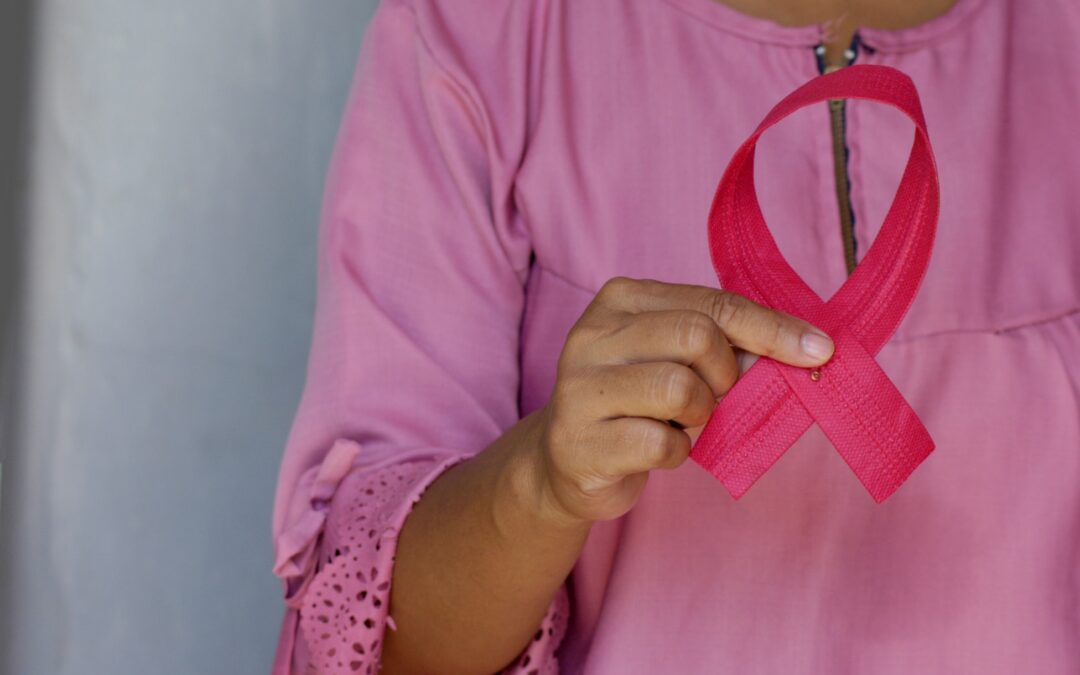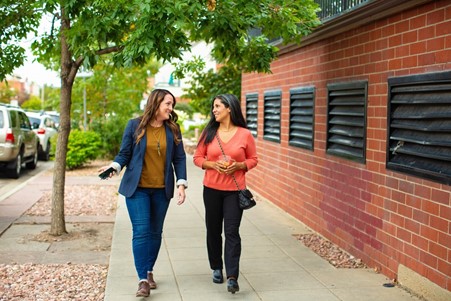
by Grace | Oct 26, 2020 | Health Assessments, Workplace Education
October is international breast cancer awareness month and the National Breast Cancer Foundation encourages your workplace to register your Pink Ribbon Breakfast to raise funds for research and awareness of breast cancer.
‘8 women lose their life to breast cancer every day in Australia’ – The National Breast Cancer Foundation, 2020.
According to www.breastscreen.org.au (2020), women in their 40s are encouraged to discuss the risks and benefits of screening with their doctor and it’s recommended that women aged 50-74 screen for breast cancer every two years.
When hosting a Pink Ribbon Breakfast, you can either book in at a venue with your workplace or do this virtually. All funds raised will go towards the following (National Breast Cancer Foundation, 2020):
- Prevention: More research is needed to understand why, how and when breast cancer spreads. The more we understand, the more chances we have of preventing it.
- Detection: More research is needed to develop effective tools to predict, detect and monitor the spread of cancer. The sooner we detect it, the better we can treat it.
- Targeted Treatments: More research is needed for personalised treatments for metastatic breast cancer. The more targeted treatment strategy, the better outcome.
Register your workplace Pink Ribbon Breakfast here – https://fundraise.nbcf.org.au/thank-you

by Grace | Oct 19, 2020 | Equipment Hire, Health Assessments, Workplace Education
Tomorrow is Ride to Work Day!
Why don’t you give it a go? Given COVID-19 interrupted “normal” working arrangements this year, a lot of our population is working from home. You could try a ride before work or a lunchtime break!
According to Bicycle Network (2020), some benefits of starting your day with a ride (or walk) to work are:
- Improved general health: A regular ride to work can help reduce the risks associated with physical inactivity including cardiovascular disease, stroke, type 2 diabetes, some cancers, obesity and depression.
- Increased productivity: Businesses that encourage staff to cycle to work benefit from increased productivity as a result of improved fitness and mental health.
- Saved money: People who ride to work not only save time and get fit, but save from $6000-$15,000 which is usually spent on fuel, car repairs, public transport tickets and parking.
- Saved time: A 5-10km ride to work will only take 15-30 minutes on average. In peak-hour city trips up to 10km are generally faster by bike than any other form of transport, door to door.
- Care for the environment: Cycling is a zero emission transport. Riding 10km each way to work instead of driving saves 1.3 tonnes of greenhouse gas emissions annually.
Workplace Health & Safety Victoria offer workplaces and private homes exercise equipment hire. You can check out what we have to offer here – https://whsvic.com.au/our-services/equipment-hire/

by Grace | Oct 13, 2020 | Workplace Education
This week is Foot Health Week! Did you know that poorly fitting shoes can not only be painful, but lead to foot problems such as inflammation, plantar fasciitis, bunions, hammer toe, ingrown toenails and corns to name a few (Mod Pod Podiatry, 2020).
With the average person spending 1/3 of their life at work, it is important to invest in some well-fitting shoes!
Here’s some tips on choosing the right shoe for you (www.footcaremd.org, 2018):
- Try on your shoes before you buy – Your shoe size can change over time. Don’t reply on the fact that you’ve always worn a certain size. Different brands may also fit your foot differently.
- Fit your shoes to the larger foot – Most people have one foot that is larger than the other, so make sure you have BOTH feet measured.
- Try on your shoes at the end of the day – When your feet are at their largest. Your feet can swell throughout the day.
- Look at the shape of your shoe – Make sure the shoe shape resembles your foot and fits your foot comfortably.
- Don’t plan on shoes stretching over time – They should fit well when you buy them.
- Check the width of your shoe – The ball of your foot (the widest part just before your toes begin) should comfortably fit at the widest part of the shoe).
- Check the depth of the shoe – The shoe should be deep enough to fit your toes, especially if you have hammer toes or other conditions.
- Check the space at the end of the shoe – Stand up and make sure there is about a finger width between your longest toe and the end of your shoe.
- Always stand and walk around in your shoes – this will help you determine that they are comfortable, fit well and don’t chafe or rub.

by Grace | Oct 5, 2020 | Health Assessments, Workplace Education
This month is Mental Health Month. The campaign encourages all of us to think about our mental health and wellbeing, regardless of whether we may have a lived experience of mental illness or not.
This year’s theme is ‘Tune In’. Tuning in means being present, aware of what is happening within you and the world around you.
Tips on how to ‘Tune In’:
Meditation:
There are some great apps available for free and purchase for smart phones or your computer. Sessions run anywhere from 3 minutes – an hour and help you take time out to relieve stress or anxiety.
Find silence:
With the busy lives we live, studies have shown that sitting in silence for 5 minutes a day may help new brain cells form and help us to ‘think outside the box’ – www.opencolleges.edu.au (2016).
Focus on your breath:
Deep abdominal breathing encourages full oxygen exchange as well as slows the heart rate and stabilises blood pressure (www.health.harvard.edu, 2020).
Create a morning ritual:
Get up 15 minutes earlier to make time to sit and tune in with yourself. You may want to set your intentions for the day, spend time meditating, sit in silence or repeat positive affirmations (www.doyou.com, 2020).
Exercise:
According to www.ncbi.nlm.nih.gov, exercise improves mental health by reducing anxiety, depression and negative mood and by improving self-esteem and cognitive function.
Do more of what makes you happy:
What makes you smile? It may me painting, listening to music, enjoying a coffee outside, going for a walk in nature or reading a magazine. Take time out every day to do something you love.
On top of Mental Health Month, this week is Borderline Personality Disorder Awareness Week. According to www.bpdawareness.com.au (2020), this year’s campaign aims to change the way we think and talk about borderline personality disorder (BPD). Borderline personality disorder (BPD) is a serious mental illness that centres on the inability to manage emotions effectively (www.borderlinepersonalitydisorder.org, 2020). The campaign also encourages people living with BPD to be mindful of the way they think about themselves, allow others to see their challenges, move towards strengths-based self-talk and to celebrate their strengths.
Click here to read more about BPD – https://www.borderlinepersonalitydisorder.org

by Grace | Sep 22, 2020 | Workplace Education
Prostate Cancer is the most diagnosed cancer in Australian men with 20,000 diagnoses and close to 3,300 deaths each year.
(www,prostate.org.au, 2017)
According to the Prostate Cancer Foundation Australia (2017), all men over 50 years of age (or 40 if they have a family history of prostate cancer) should talk to their GP about testing for prostate cancer, as part of their regular health check-up.
“Finding cancer early improves your chances of successful treatment and long-term survival.” – The Cancer Council, 2020.
Help increase the awareness of prostate cancer support Australian men with prostate cancer and their families, you can donate here – https://www.prostate.org.au/donate/

by Grace | Sep 14, 2020 | Workplace Education
Caffeine is a stimulant that acts on the brain and nervous system.
How much caffeine should we be consuming per day?
According to healthdirect.gov.au (2019), the research is not clear but it’s likely that healthy adults can in general consume around 400mg of caffeine a day, that’s two espresso coffees or 5 energy drinks. Below is a guide to what this may look like:
- Espresso (50ml cup): 150-200mg
- Instant coffee (1 teaspoon): 60-80mg
- Black tea (250ml cup): 50mg
- Energy drink (250ml can): 80-100mg
- Coca Cola (375ml can): 50mg
- Dark chocolate (50g bar): 60mg
- Milk chocolate (50g bar): 10mg
*Pregnant or breastfeeding women should limit their intake to 200mg a day (for example, 1 espresso, 2 instant coffees or 4 cups of tea). In addition, people with health conditions should speak with their doctor about caffeine incorporation in their lifestyle.
Does consuming caffeine come with its benefits?
Healthdirect.gov.au (2019) reveals that in addition to caffeine making you feel more alert and energetic as it is a stimulant, people who drink coffee regularly might have a lower than average risk of:
- Type 2 Diabetes
- Depression
- Parkinson’s Disease
- Bowel cancer
- Alzheimer’s Disease
What about too much caffeine?
Some people are particularly sensitive to caffeine where 1 coffee per day gives them a racing heart. If this is the case for you, it is advised you give up coffee. For the average person who consumes more than 500mg of caffeine per day, for example 3 espresso coffees or 6-7 instant coffees, you may experience the following:
- Agitation
- Anxiousness
- Difficulty sleeping
- Rapid breathing
- Rapid heart rate
It is said that if you drink a lot of coffee over a long period of time, it may increase your risk of:
- Heartburn
- Osteoporosis
- Insomnia
Withdrawing from caffeine:
According to healthdirect.gov.au (2019), because caffeine is addictive, many people have withdrawal symptoms after a day or two without it which can include:
- Headaches
- Tiredness
- Irritability
- Nausea
- Difficulty concentrating
If you would like to reduce the amount of caffeine you consume, it’s a good idea to do this gradually. For example, reduce your intake over a couple of weeks and avoid cutting down by more than 1 caffeinated drink between consecutive days. Another option for coffee drinkers would be to gradually switch to decaffeinated coffee.





